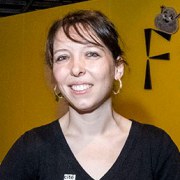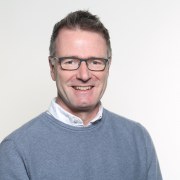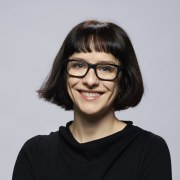Exhibiting complex, unfinished science
Exhibitions are a slow medium and imply authority, so how can we present knowledge that is still evolving? Science centres and museums have tended to exhibit settled science; histories of great men and great discoveries, or textbook facts brought to life. It is more difficult – and more controversial – to show unsettled science. How can we strike a balance between revealing exciting process and keeping a critical stance? Showing science-in-the-making also challenges curators to cross boundaries and open up the laboratory, with its strange and disposable objects and ethically complex subjects.
We will share three experiences of addressing these challenges through collaborative and interdisciplinary projects in the complex fields of gut and brain science. In this context we will discuss how to build connections between the personal and the scientific, how to make the invisible visible, how to engage with visitors’ bodies in the exhibition space, how to connect the personal and the scientific and how to display historic and contemporary medical objects.
Facilitator
Medical Museion & Novo Nordisk Foundation Center for Basic Metabolic Research, University of Copenhagen
Session speakers
Muséographe (exhibit developer)
The purpose of the exhibition “Microbiote” (Cité des sciences et de l’industrie) is to introduce the visitors to their digestive organs and to their microscopic internal world, the gut bacteria.
Both collaborations with Giulia and Jill Enders’s very subtle and humorous approach, and with INRA researchers made possible to tackle this delicate and complex subject. Research on the intestinal microbiota is still in its infancy and we had to deal with unsettled conclusions to make this travelling exhibition.
How to show what is currently being discovered in the laboratories about this unfinished science? My intervention will present the museographical proposals that we have tried to implement in the exhibition.
University of Portsmouth: School of Art, Design and Performance
Portsmouth
United Kingdom
The Wellcome Collection exhibition Brains: the Mind as Matter in 2012 and 2013 concentrated not on brain function but on the way that brains have been treated in practice by scientists, doctors, medical technicians, artists and others, as cultural material from which efficacious disciplinary effects and social meanings have been derived. Its strapline was: ‘Not what brains do for us, but what we do to brains.’ I will present how this object-centred approach enabled the curators to focus on changing views within brain research and to stress the continuing uncertainty that surrounds understanding of how the brain works as an entirety. The embrace of the shadowy frontiers of science, and their cultural inflections, proved extremely popular with the public.
Associate Professor & Curator
Medical Museion & Novo Nordisk Foundation Center for Basic Metabolic Research, University of Copenhagen
Medical Museion’s exhibition Mind the Gut from 2017 explores the connection between our brains and our bowels. It combines contemporary, unfinished science with medical history and personal experience – the curation process brought museum staff together with artists and scientists, all invited to step outside their usual disciplinary boundaries. I will share some thoughts on how this mirroring between exhibition topic and curation process helped the team approach unsettled science, in part by unsettling themselves.




